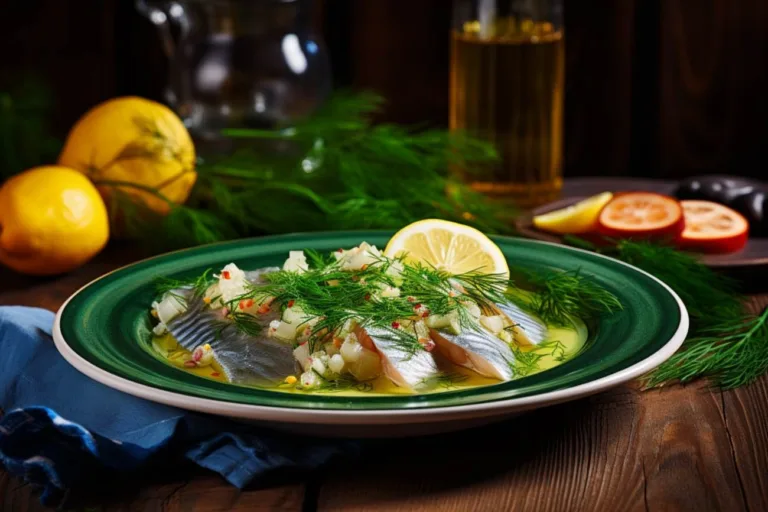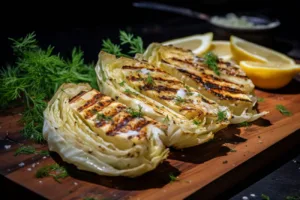Welcome to the world of Gravad Strömming, a classic Swedish dish that combines the freshness of herring with the rich flavors of traditional Scandinavian spices. In this article, we’ll dive deep into the history, preparation, and cultural significance of Gravad Strömming, as well as share some mouthwatering recipes for you to try at home.
The history of gravad strömming
Gravad Strömming, also known as ”buried herring,” has a storied history in Swedish cuisine. Its roots date back to the medieval times when herring was a staple food in Sweden, owing to its abundance in the Baltic Sea. The name ”gravad” comes from the traditional method of preparing the dish: burying the fish in the sand to ferment and preserve it.
Over the centuries, Gravad Strömming evolved into a delicacy enjoyed at festive occasions and celebrations. Today, it’s a popular dish often served at Midsummer feasts, Christmas gatherings, and other special events in Sweden.
Ingredients and preparation
To make Gravad Strömming, you’ll need the following ingredients:
- 10-12 fresh herring fillets
- 1 cup coarse sea salt
- 1/2 cup granulated sugar
- 2 tablespoons crushed white peppercorns
- 1 bunch fresh dill
- 1 red onion, thinly sliced
Here’s a step-by-step guide on how to prepare this delectable dish:
- Clean the herring fillets and remove any bones. Cut them into smaller pieces for easier serving.
- In a bowl, mix the sea salt, sugar, and crushed white peppercorns to create the curing mixture.
- Place a layer of herring fillets in a dish, sprinkle the curing mixture on top, and add a few sprigs of fresh dill.
- Repeat the layering process until all the herring fillets are used, making sure to cover each layer with the curing mixture and dill.
- Cover the dish with plastic wrap and refrigerate for at least 48 hours. During this time, the fish will cure and develop its distinct flavor.
- Before serving, garnish with thinly sliced red onion and additional fresh dill.
Your Gravad Strömming is now ready to be enjoyed!
Cultural significance
Gravad Strömming is more than just a dish; it’s a symbol of Swedish culinary heritage and a testament to the resourcefulness of the Swedish people. In the past, curing herring in this way allowed it to be preserved for extended periods, providing sustenance during harsh winters.
Today, Gravad Strömming represents the flavors of Sweden, and its unique taste is a source of pride for the nation. It’s often served with crispbread, mustard sauce, and boiled potatoes, creating a harmonious blend of textures and flavors.
Recipes to try
Here are two delicious recipes featuring Gravad Strömming:
Gravad Strömming Sandwich
For a quick and tasty snack, try making a Gravad Strömming sandwich:
Ingredients:
- Gravad Strömming fillet
- Crispbread or rye bread
- Mustard sauce
- Fresh dill
- Red onion slices
Spread mustard sauce on the crispbread, add a Gravad Strömming fillet, and top with fresh dill and red onion slices. Enjoy!
Gravad Strömming Salad
For a refreshing salad, try this Gravad Strömming recipe:
Ingredients:
- Gravad Strömming fillet, flaked
- Leafy greens
- Cherry tomatoes
- Cucumber slices
- Radish slices
- Red onion rings
- Mustard sauce dressing
Toss the leafy greens, cherry tomatoes, cucumber slices, radish slices, and red onion rings in a bowl. Top with flaked Gravad Strömming fillet and drizzle with mustard sauce dressing. Serve chilled.
Frequently asked questions
What is the origin of Gravad Strömming?
Gravad Strömming has its roots in medieval Sweden, where herring was abundant. The name comes from the traditional method of burying the fish to ferment and preserve it.
How long does it take to cure Gravad Strömming?
Gravad Strömming should be refrigerated for at least 48 hours to properly cure and develop its distinct flavor.
What are some traditional accompaniments for Gravad Strömming?
Traditional accompaniments include crispbread, mustard sauce, and boiled potatoes. These elements complement the dish’s flavors and textures.
Se även nedan:






